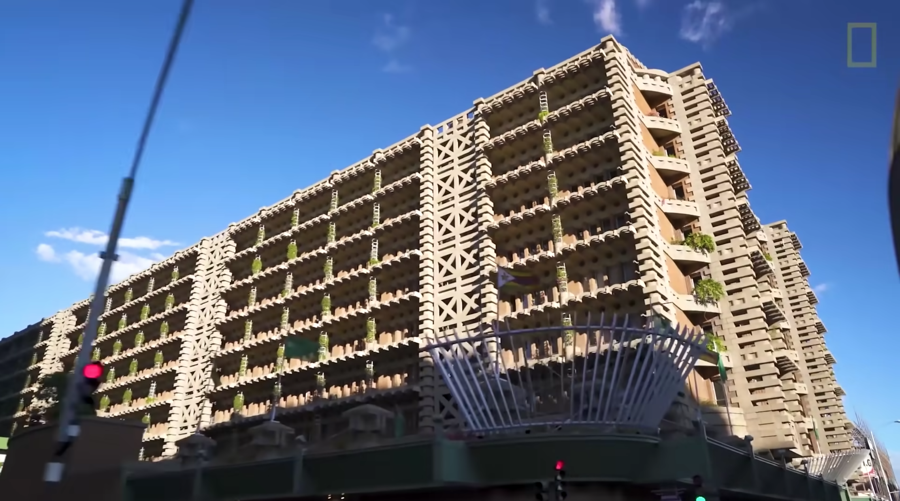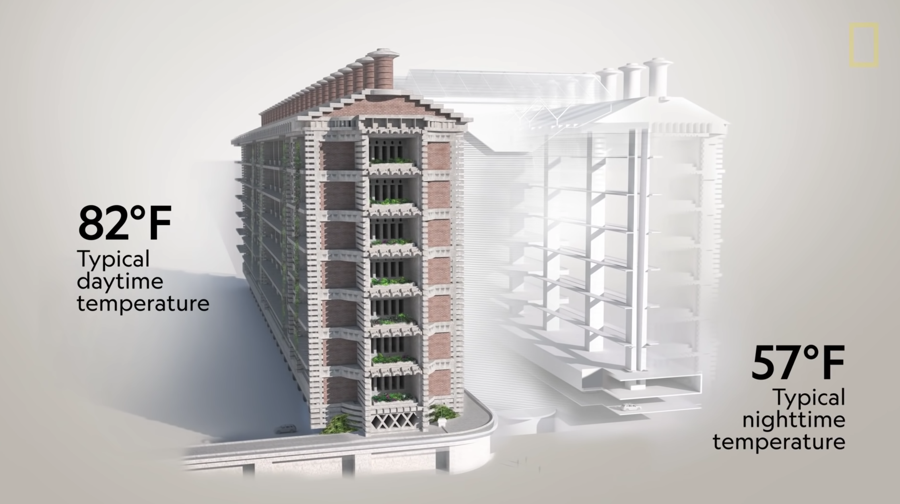Termite mounds are epic mud towers that reach eight to nine meters (26 to 30 feet) high. They look solid and simple from the outside, but these nests are a well-designed, enhanced with tiny surface holes that allow air to freely circulate between the inside and the outside. It’s a highly effective cooling system that requires zero electricity, only insect engineering. Via Nautilus:
“Based on the ideas of the Swiss entomologist Martin Lüscher, many researchers believed the mounds acted as air conditioners, maintaining a nest’s pleasant temperature, humidity, and oxygenation by continuously exchanging hot air rising from deep inside a colony with cooler drafts diffusing down from the surface. According to Lüscher, the mounds’ towering height allowed the “hot breath” of the colony’s biomass to drive this convective exchange.”
This termite-designed ventilation inspired architect Mick Pearce. In 1991, he was commissioned to design the passively cooled Eastgate Centre in Harare, Zimbabwe. Today, the building stands as a testament to how biomimicry can improve architectural design. National Geographic explains more in the video above:
“The building is made from concrete slabs and brick. Just like the soil inside a termite mound, these materials have a high “thermal mass”—which means they can absorb a lot of heat without really changing temperature. The exterior of the building is prickly like a cactus. By increasing the amount of surface area, heat loss is improved at night, while heat gain is reduced during the day.”
“Inside the building, low-power fans pull in cool night air from outside and disperse it throughout the seven floors. The concrete blocks absorb the cold, insulating the building and chilling the circulating air. When the morning comes and temperatures rise, warm air is vented up through the ceiling and released by the chimneys.
“Thanks to this innovative design, temperatures inside stay at a comfortable 82°F during the day and 57°F at night. Not to mention, it uses up to 35% less energy than similar buildings in Zimbabwe.”
Read more about The Eastgate Centre at MickPearce.com.
Then learn more about biomimicry with these videos:
• How Ingenious Animals Have Engineered Air Conditioning
• Think Like a Tree – Problem solving with nature’s best ideas
• How a kingfisher, an owl, & a penguin helped redesign Japan’s Shinkansen
• A sustainable cooling system made with wet terra cotta cones
Curated, kid-friendly, independently-published. Support this mission by becoming a sustaining member today.




